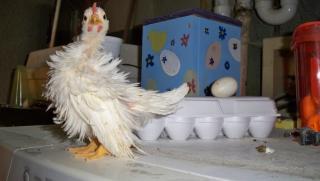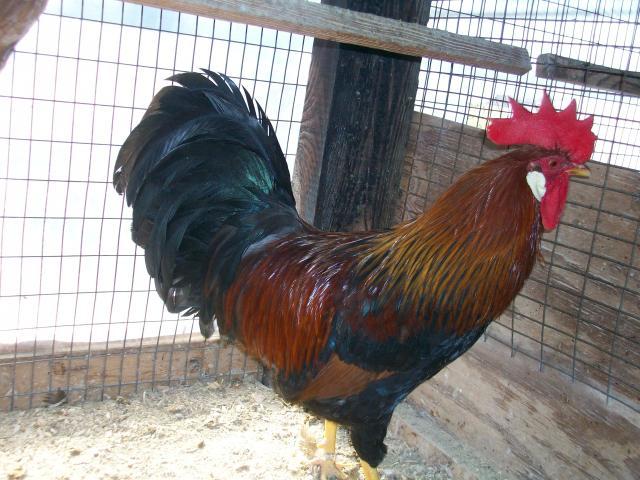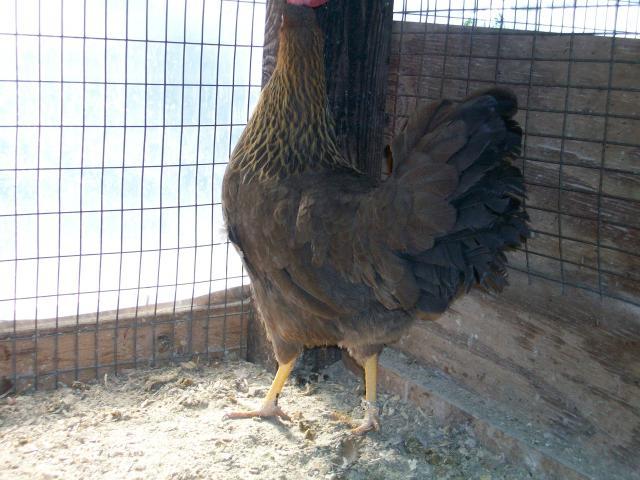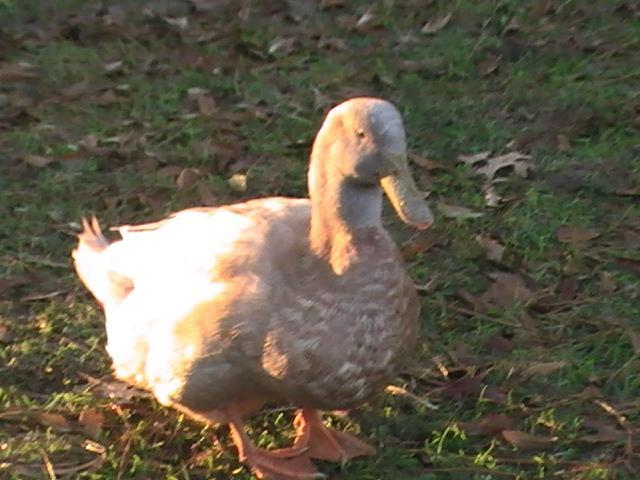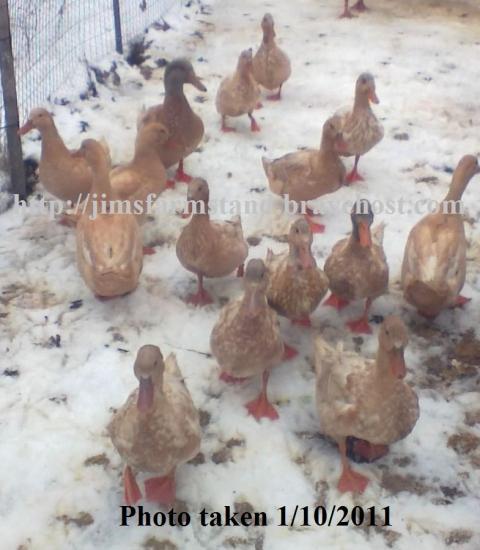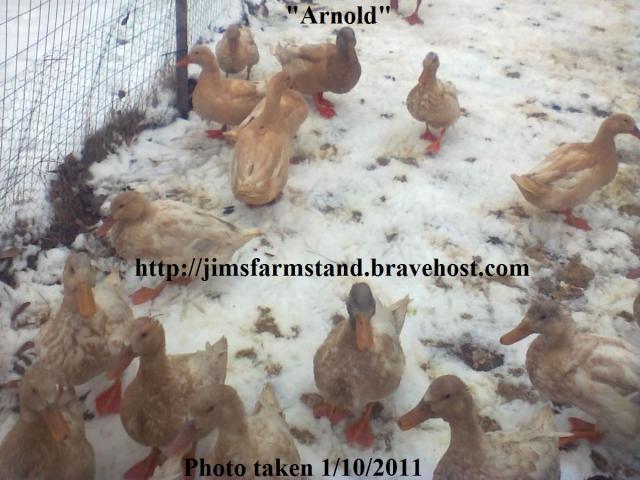We have won Best of Breed and Reserve Champion Waterfowl at APA Sanctioned shows!
From the
http://www.albc-usa.org/cpl/waterfowl/buffduck.html
Buff Duck
William Cook, the famous poultry breeder from Orpington, Kent, blended Cayuga, Runner, Aylesbury, and Rouen ducks to create a buff colored duck that would allow him to cash in on the early 20th century English fad for buff-colored plumage. This first duck was called a Buff Orpington and Cook went on to develop Blue, Black and Chocolate Orpington versions that had white bibs on their chests. Cook introduced his Buff Orpington to the United States in 1908 at the Madison Square Garden Show in New York City. In 1914, this breed was admitted into the American Standard of Perfection under the name "Buff," which is unusual since in no other instance is a color used as a breed name. (Holderread, 60)
The Buff is a medium-weight duck of 7 to 8 lbs. It is a long, broad bird with an oval head, medium length bill, and long, gracefully curved neck. The Buff duck's body carriage is twenty degrees above horizontal, its wings are short and it has a small, well-curled tail. Both the duck and drake have buff plumage, orange-yellow shanks and feet, and brown eyes. The drake's bill is yellow while the duck's bill is brown-orange. (Malone et. al., 313) A Blue variety of Orpington duck existed in the Americas, but it appears these were absorbed into the Blue Swedish breed. (Holderread, 60)
The Buff has much to offer the breeder who is looking for an attractive, dual-purpose bird. It is a good layer, typically laying about 150-220 eggs per year, and it gains weight relatively rapidly, making it ready for market within 8-10 weeks. (Batty, 108) Many consider the Buff a good meat bird that dresses out well because its light pin feathers do not show on the plucked carcass. Despite this, Buff numbers languished when industry growers followed consumer interest in cheap meat and focused attention on the faster growing Pekin even though many believe it to be less tasty. (Holderread, 60)
When choosing breeders, select robust, active, strong-legged birds with a good laying history. Avoid birds that are significantly under Standard weight and have bills with excessively concave top lines. Full-sized birds with straight bills attached high on the head make valuable breeders. Select against any non-buff plumage for show-birds. Select for white pin feathers for production birds.
ALBC's 2000 census of domestic waterfowl in North America found 793 breeding Buff ducks. Eleven people reported breeding Buff, and there are five primary breeding flocks with 50 or more breeding birds currently in existence. (Bender, 4) Consider this rare, beautiful bird for a lovely and useful addition to your flock.
Status: Threatened.
Bibliography:
Batty, J. Domesticated Ducks and Geese. Liss, England: Nimrod Book Services, 1985.
Bender, Marjorie E. F. D. Phillip Sponenberg, and Donald Bixby. Taking Stock of Waterfowl: The Results of the American Livestock Breeds Conservancy's Domestic Duck and Goose Census. Pittsboro, NC: The American Livestock Breeds Conservancy, 2000.
Holderread, Dave. Storey's Guide to Raising Ducks. Pownal, VT: Storey Communications, Inc., 2001.
Malone, Pat; and Gerald Donnelly, and Walt Leonard. The American Standard of Perfection. Mendon, MA: American Poultry Association, 1998.
